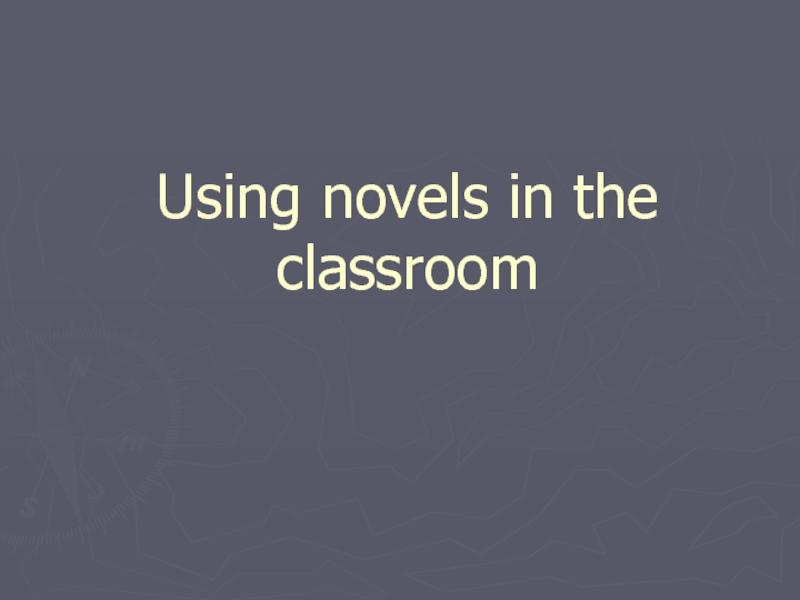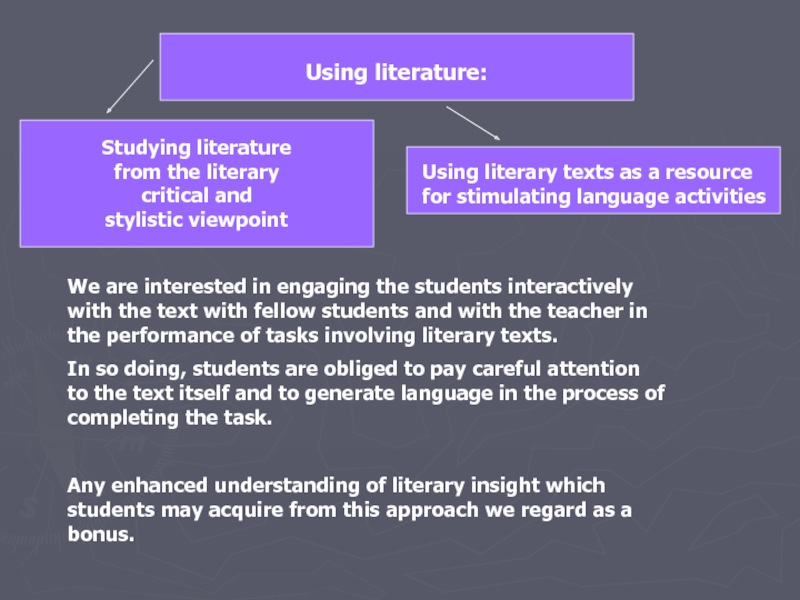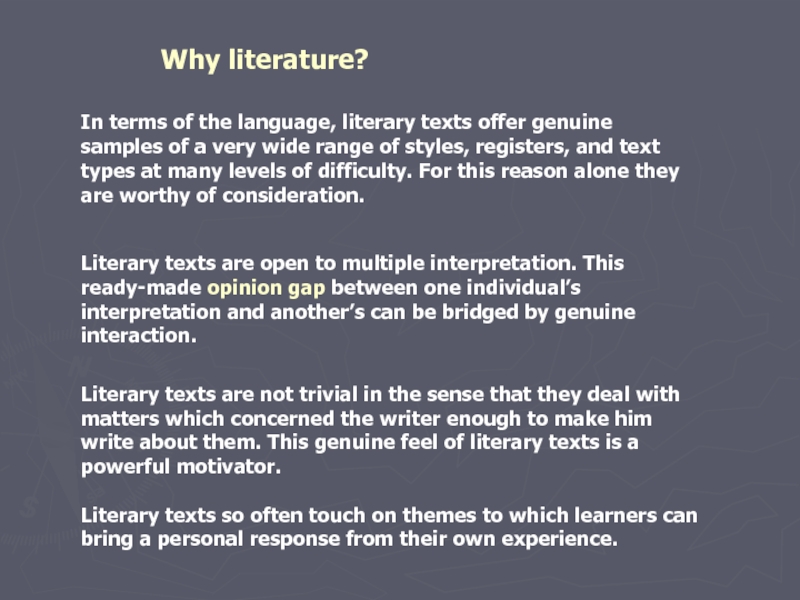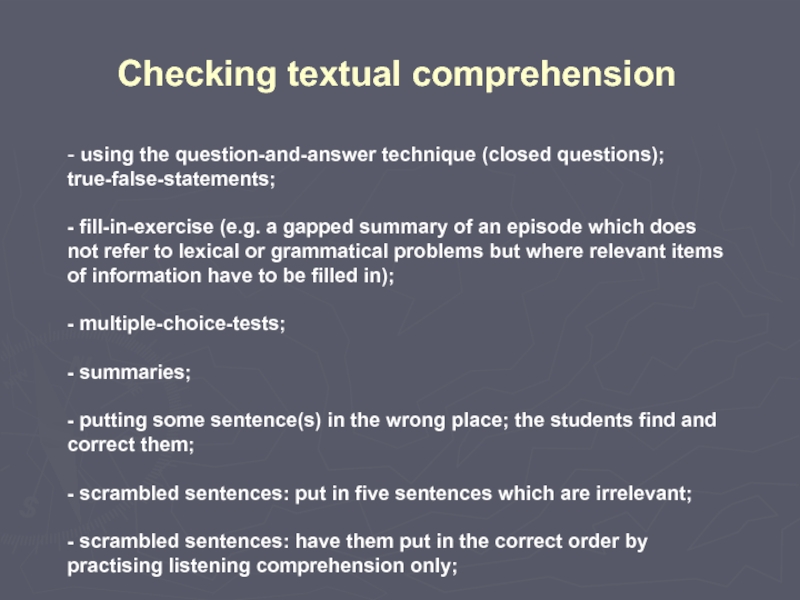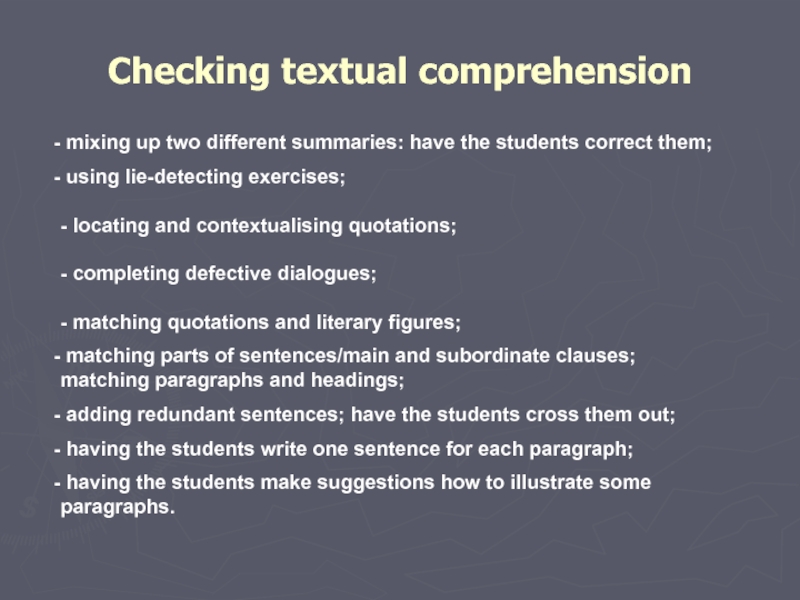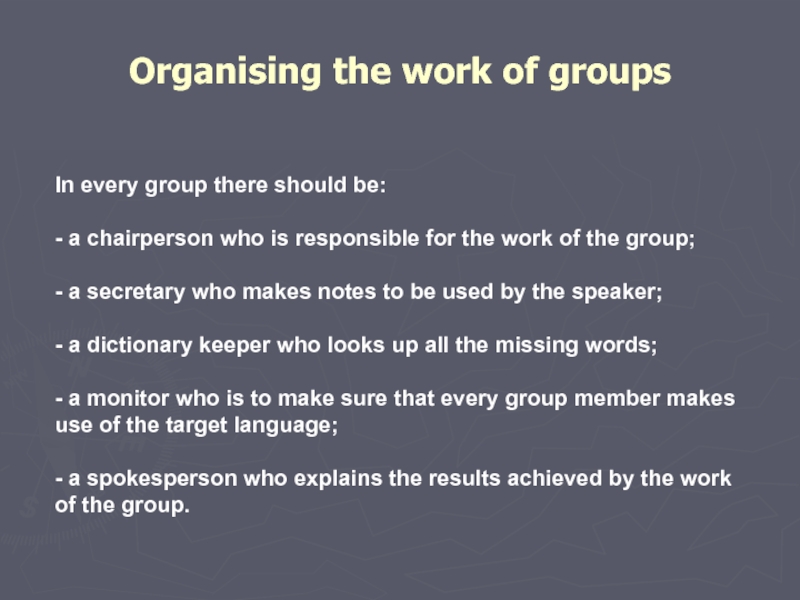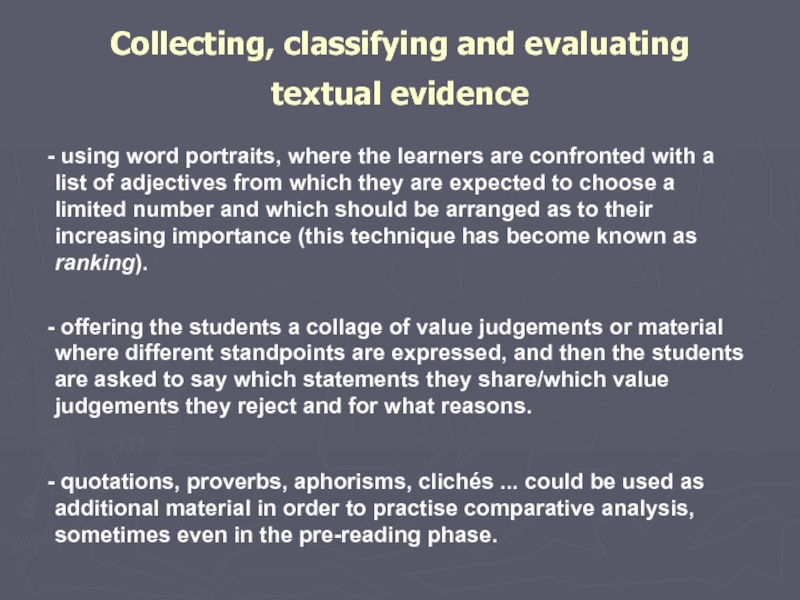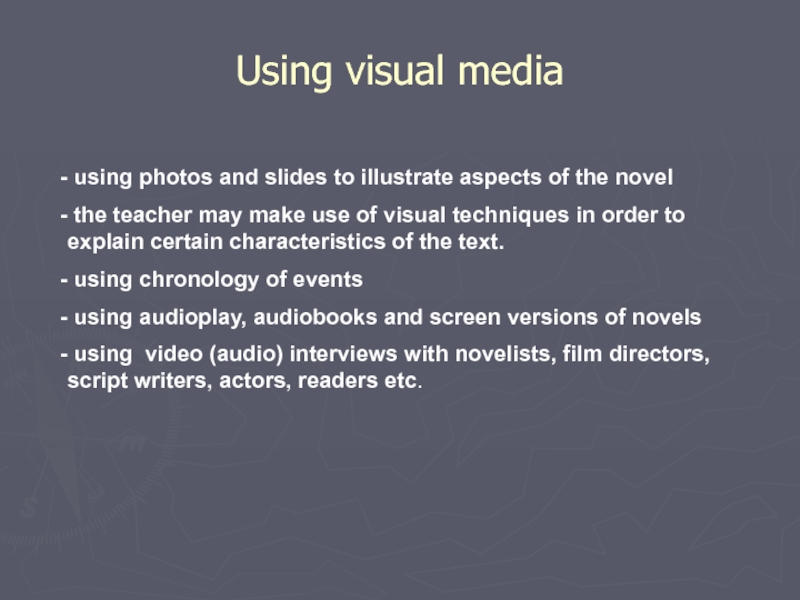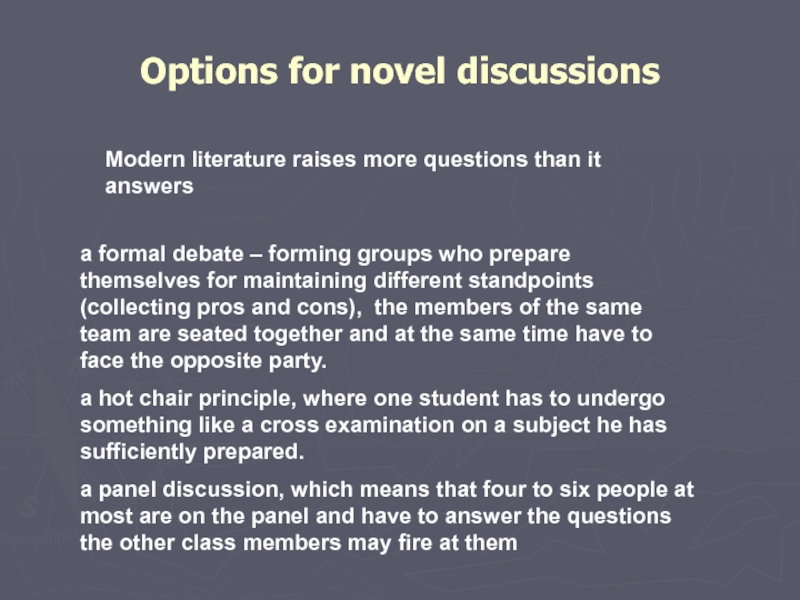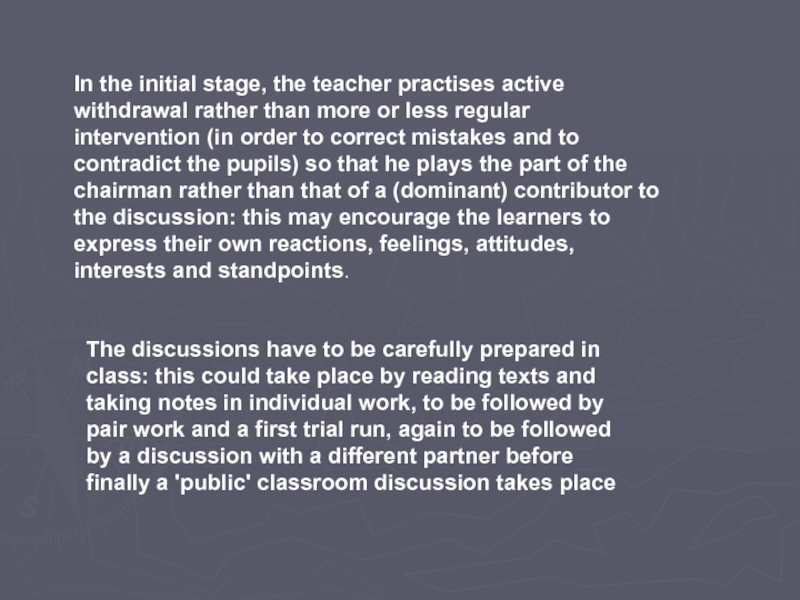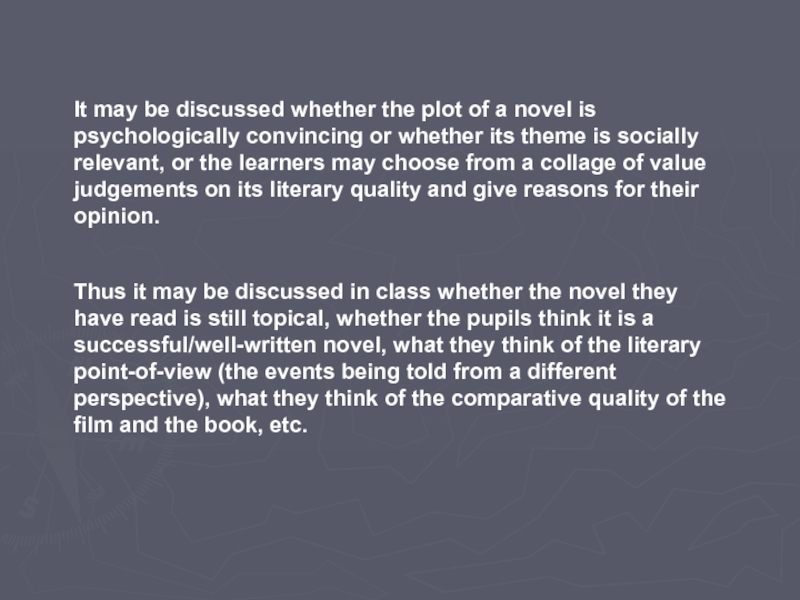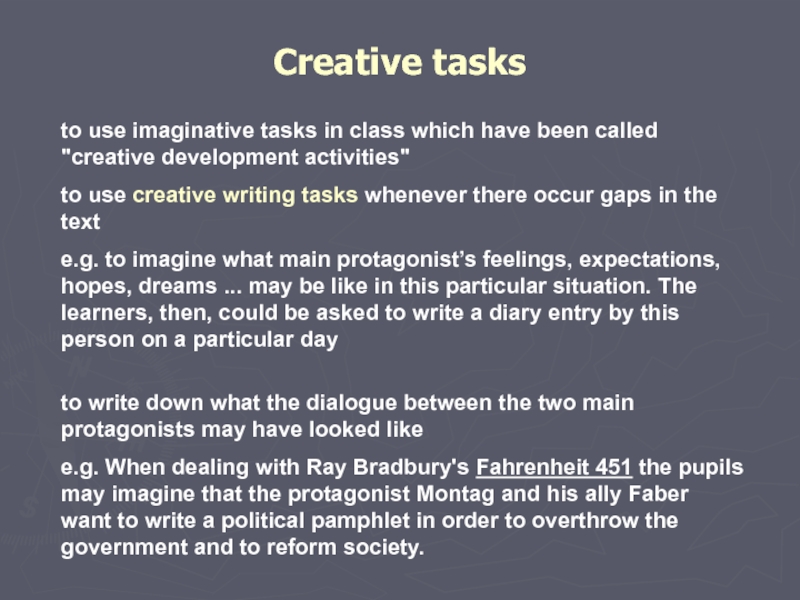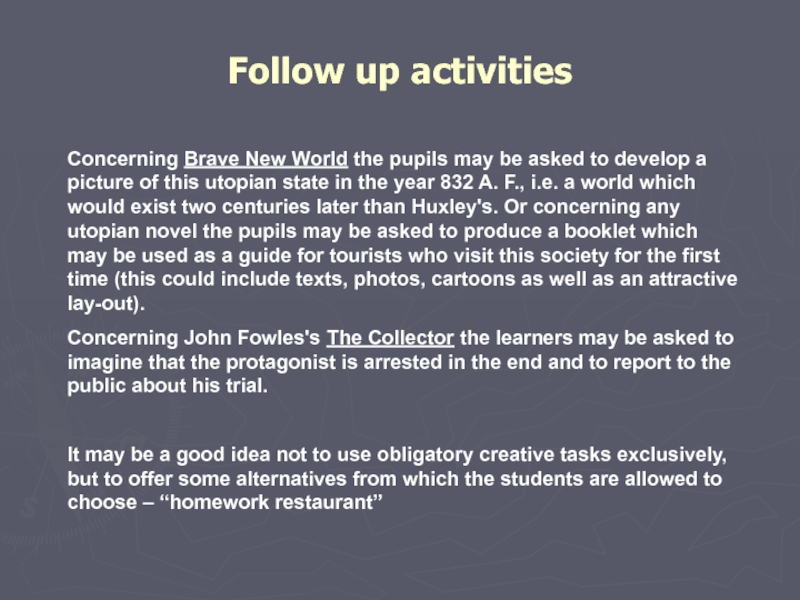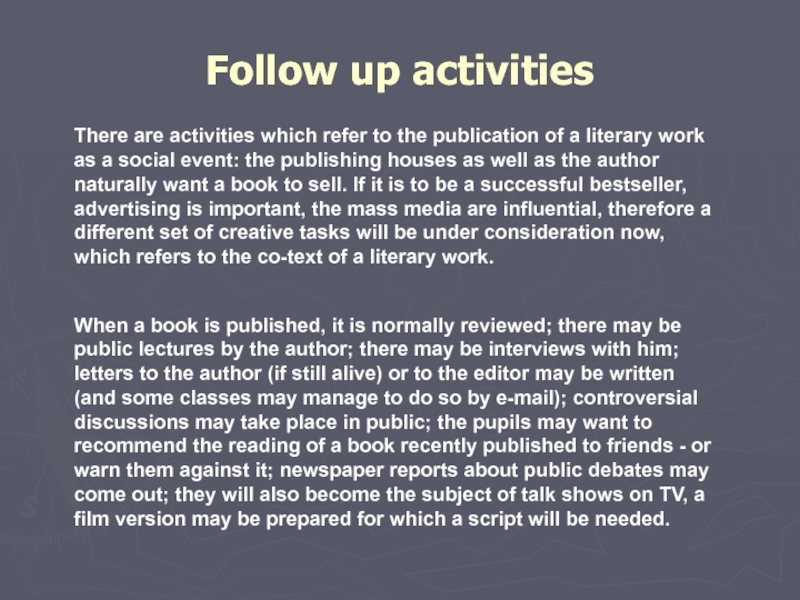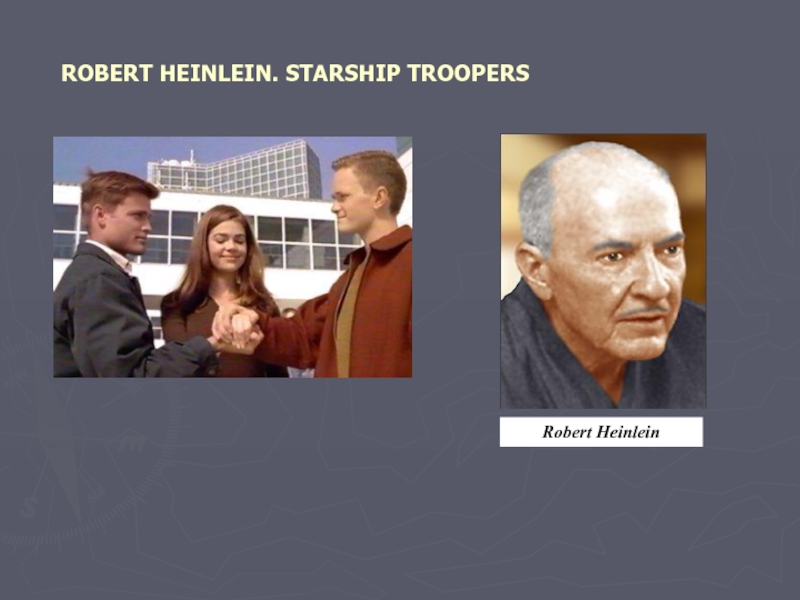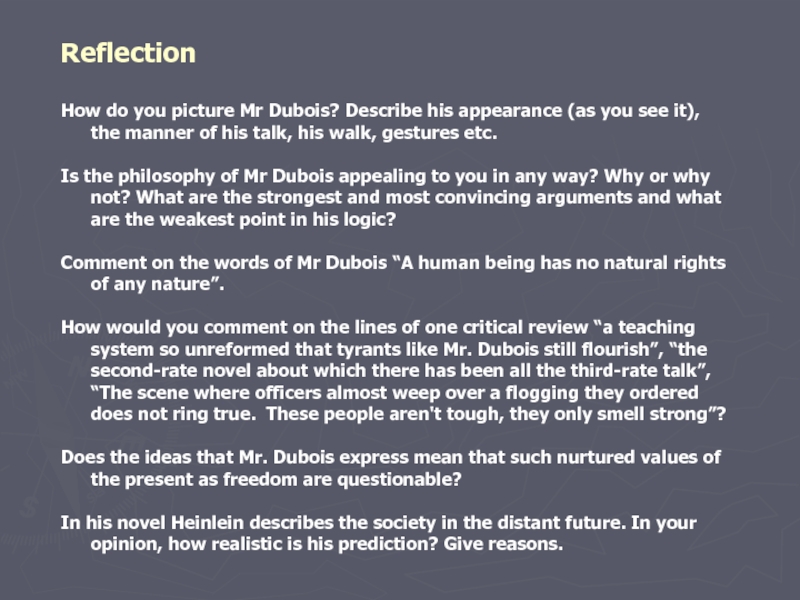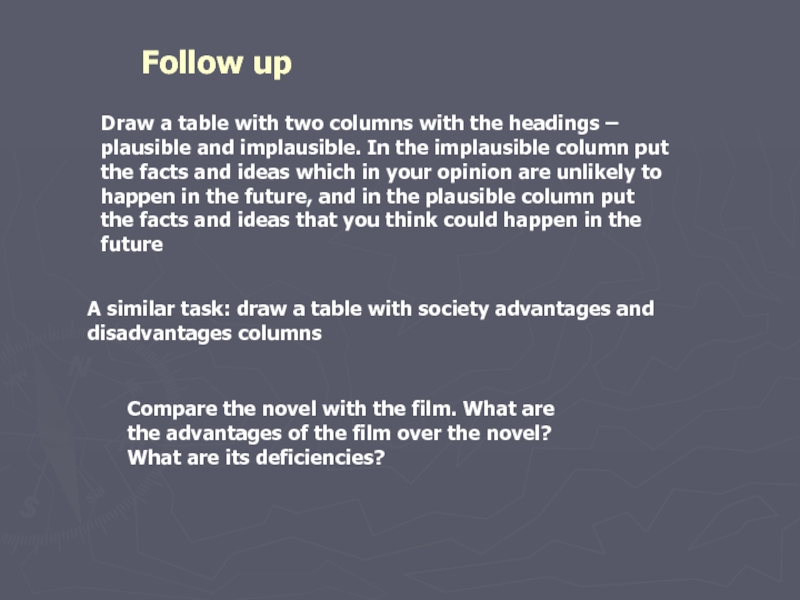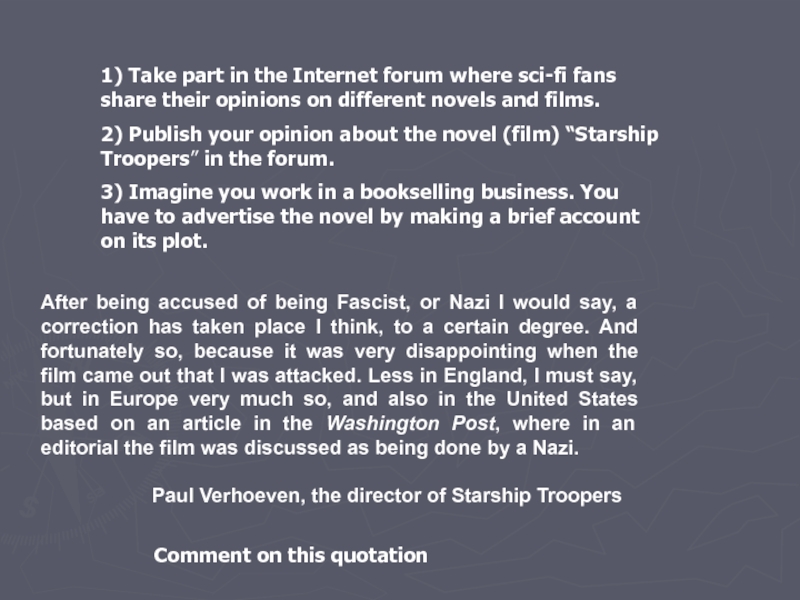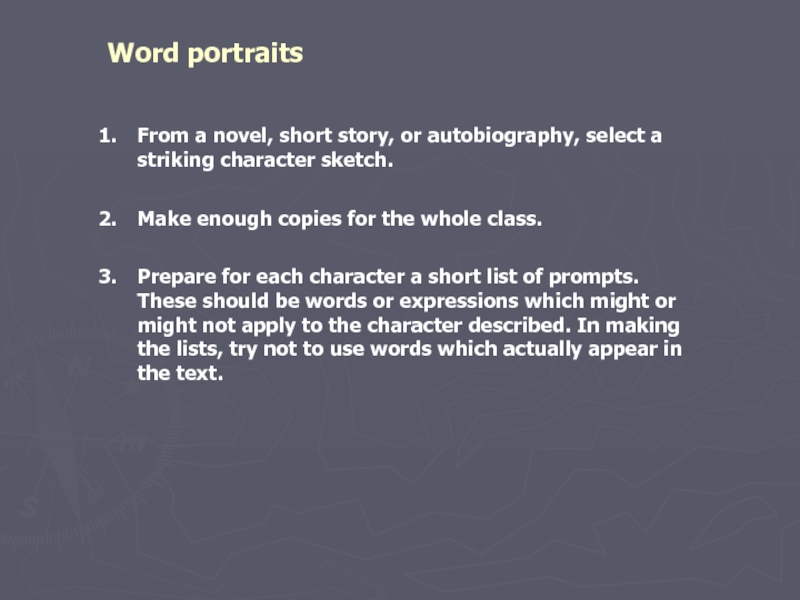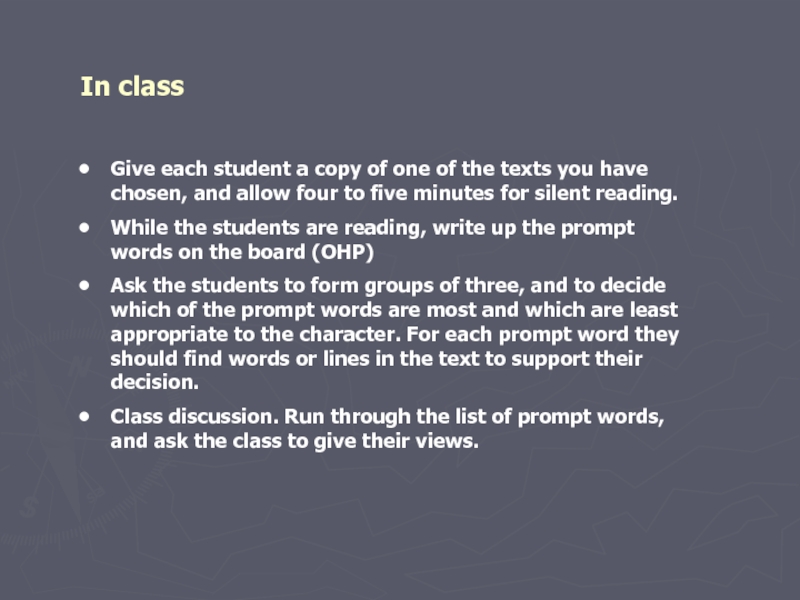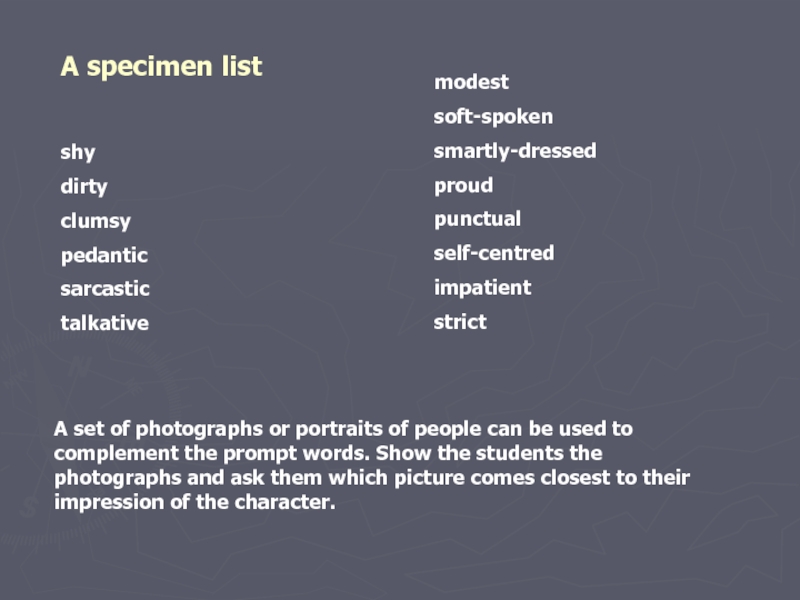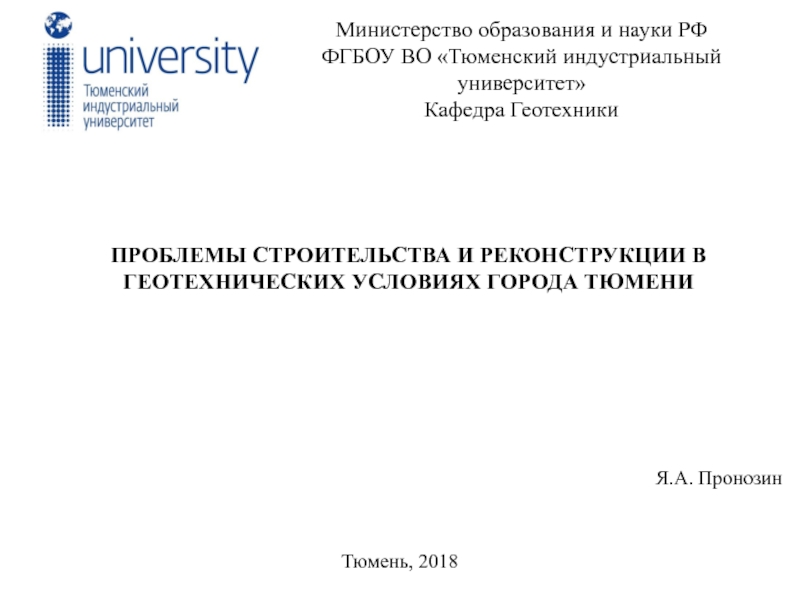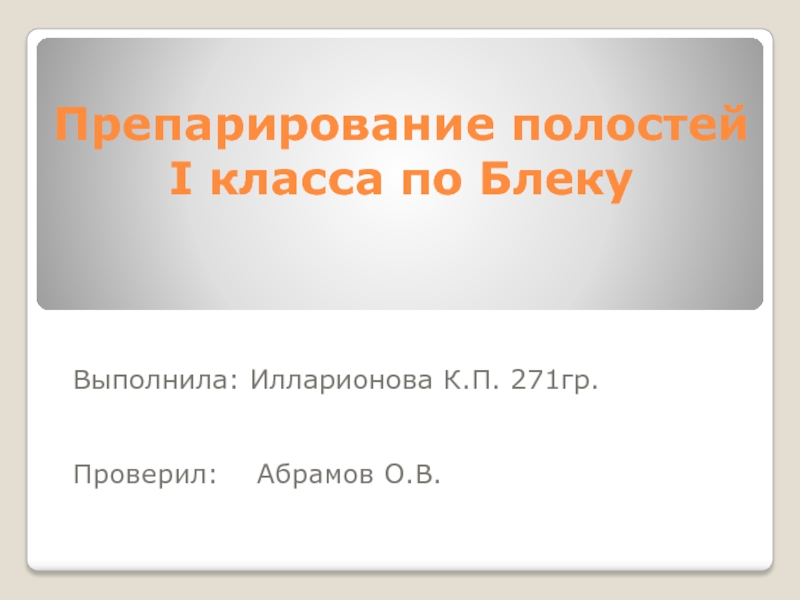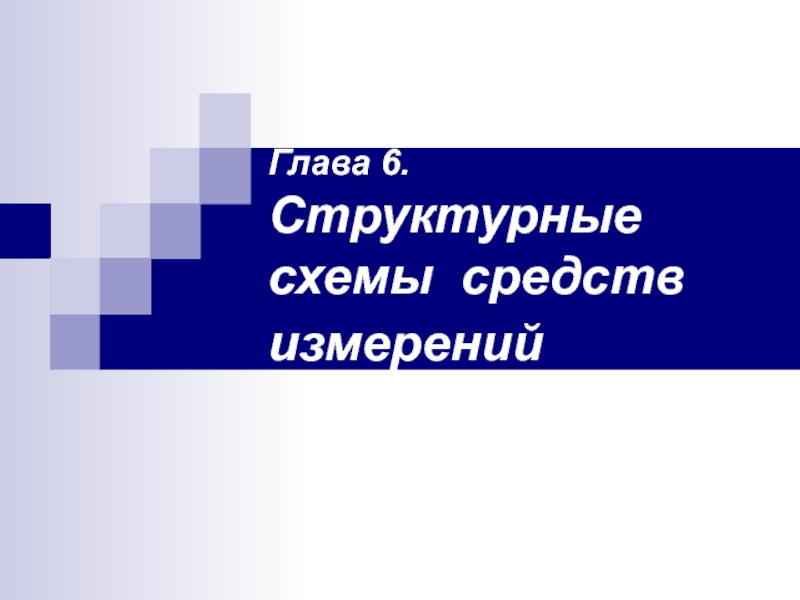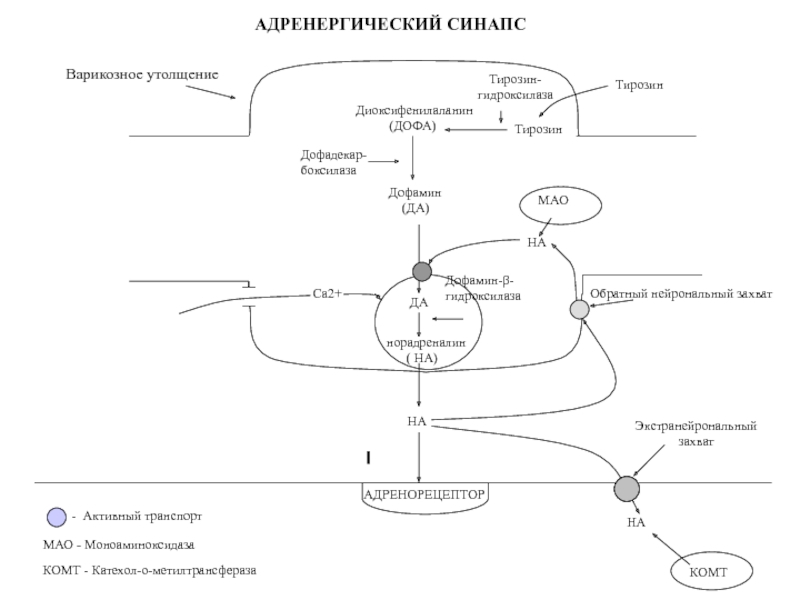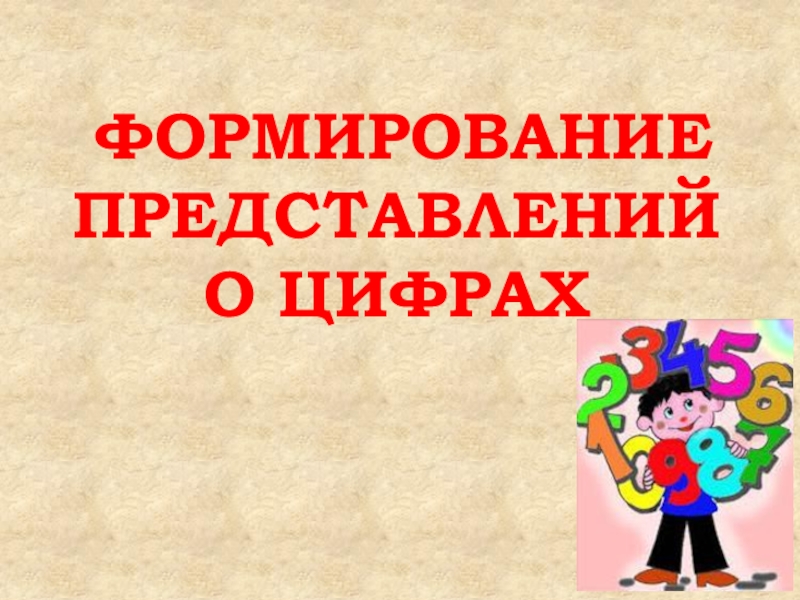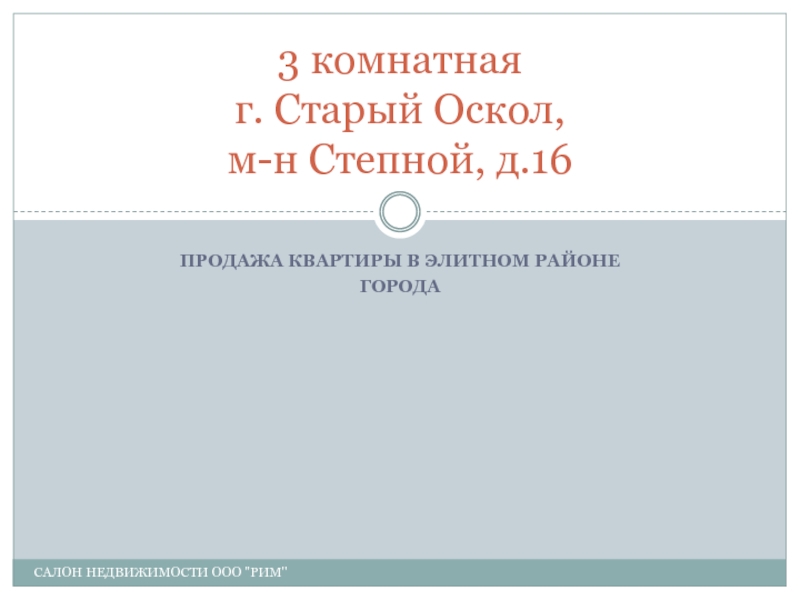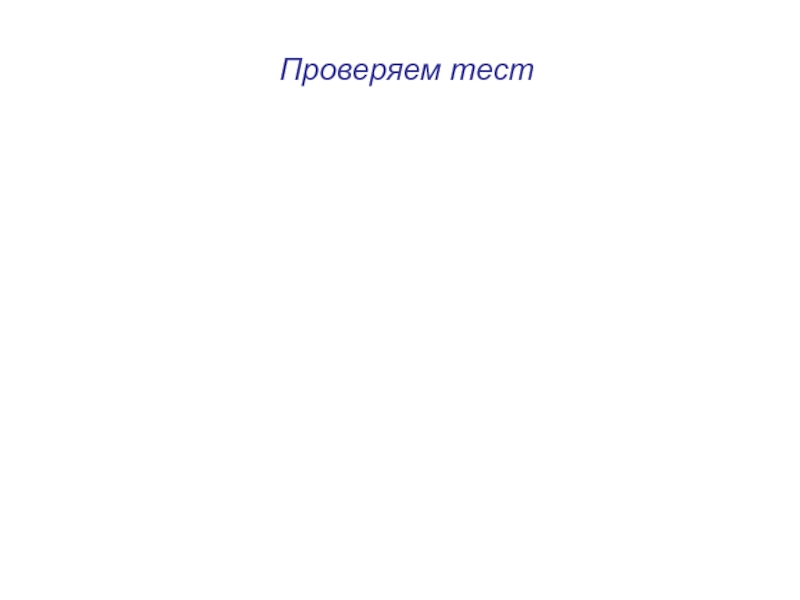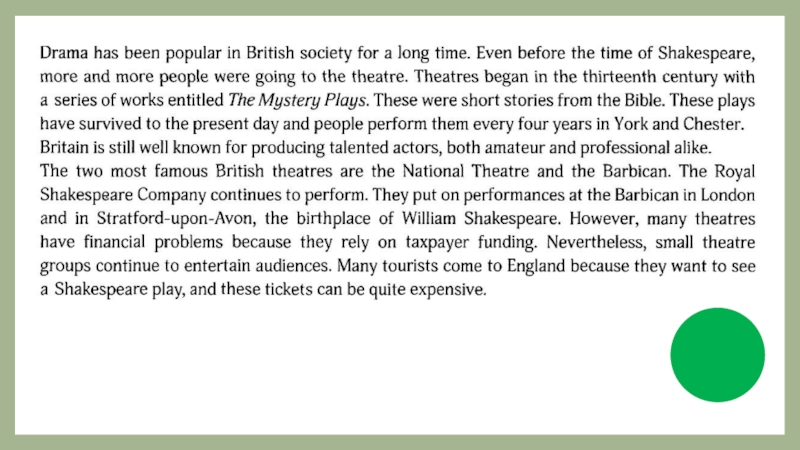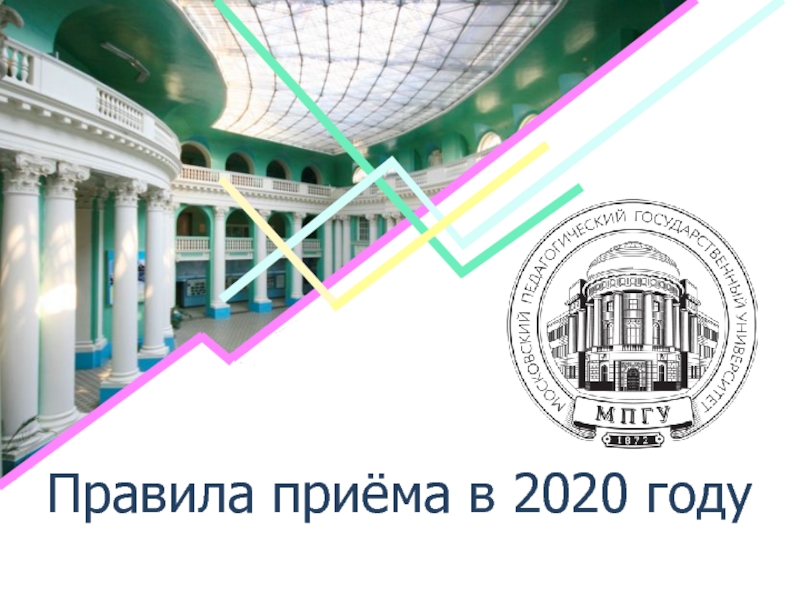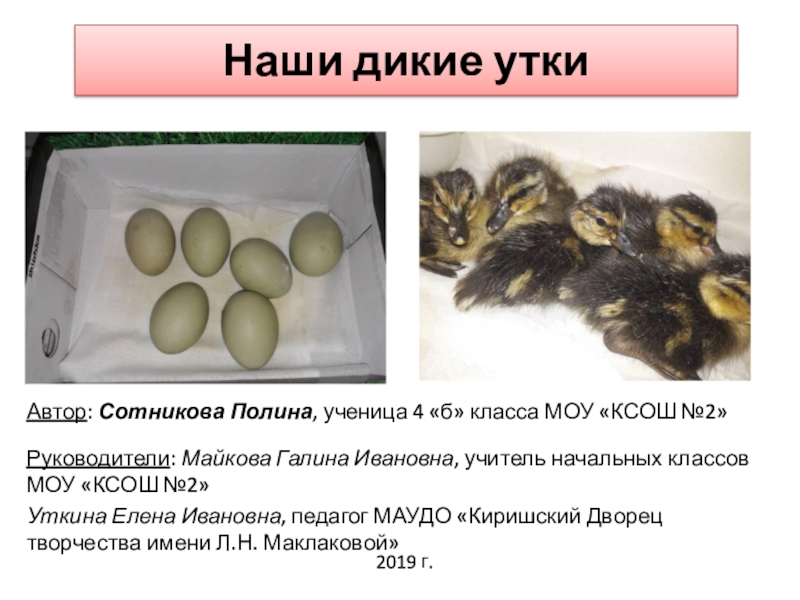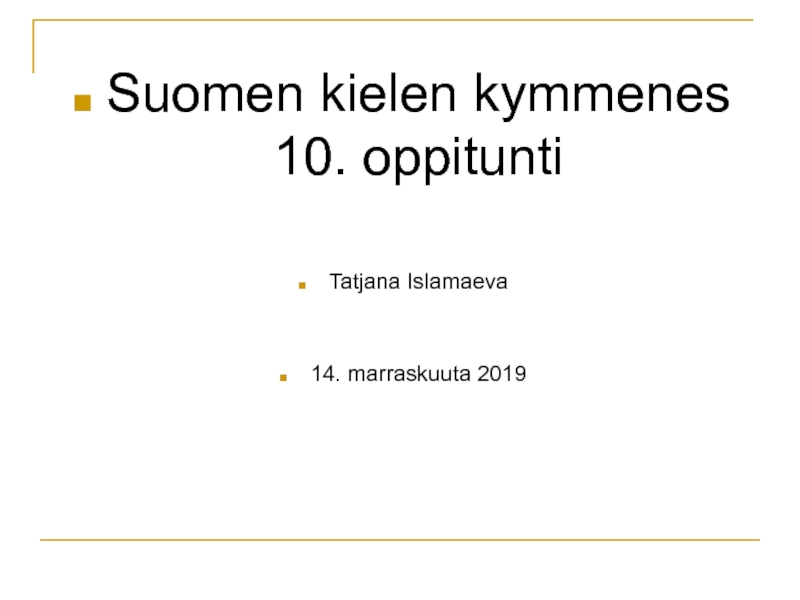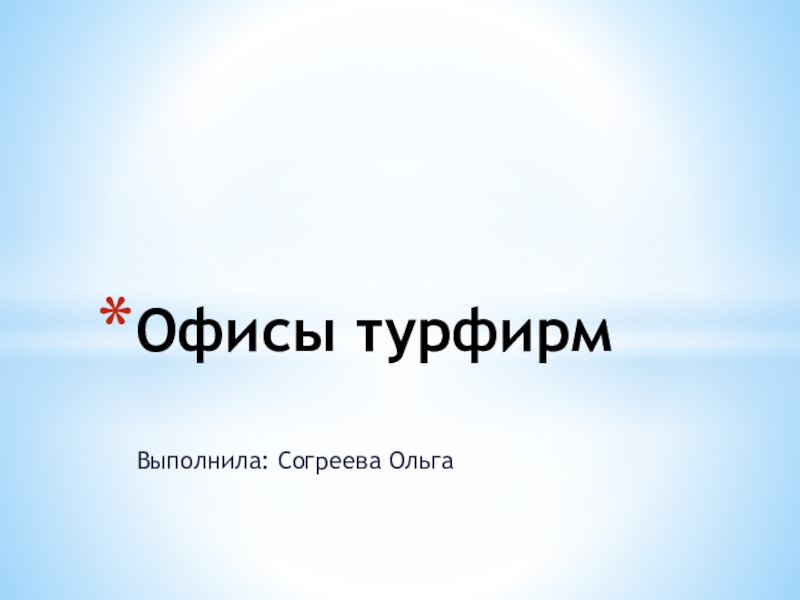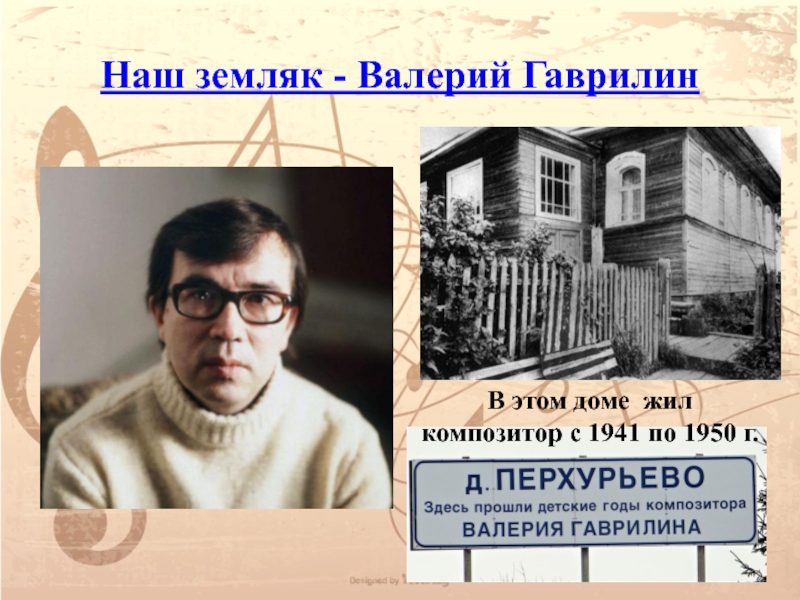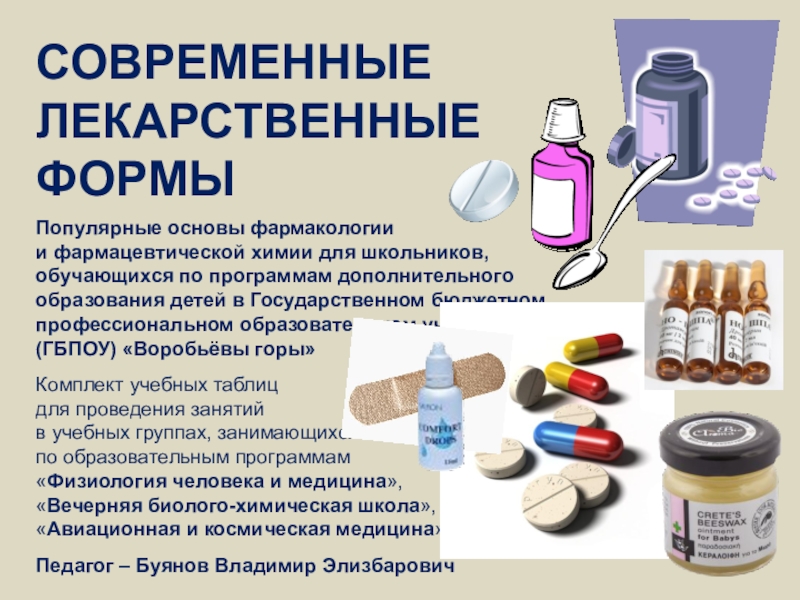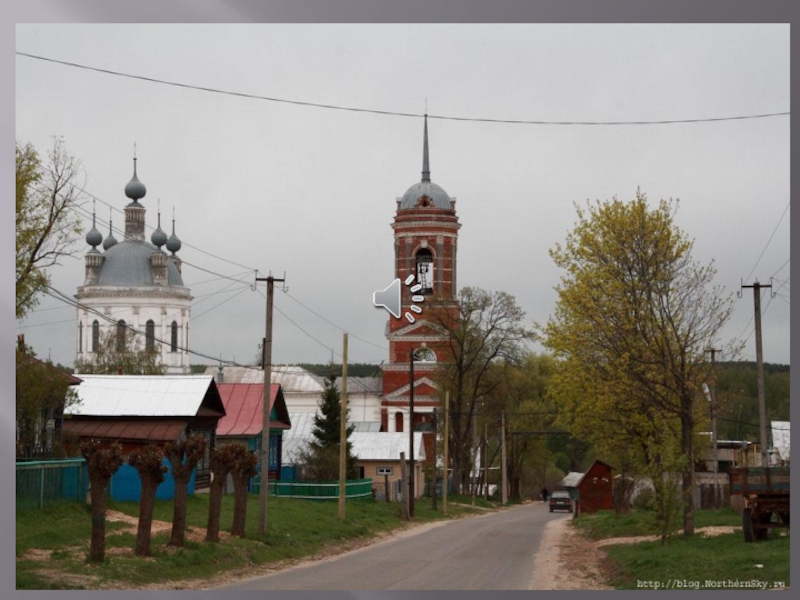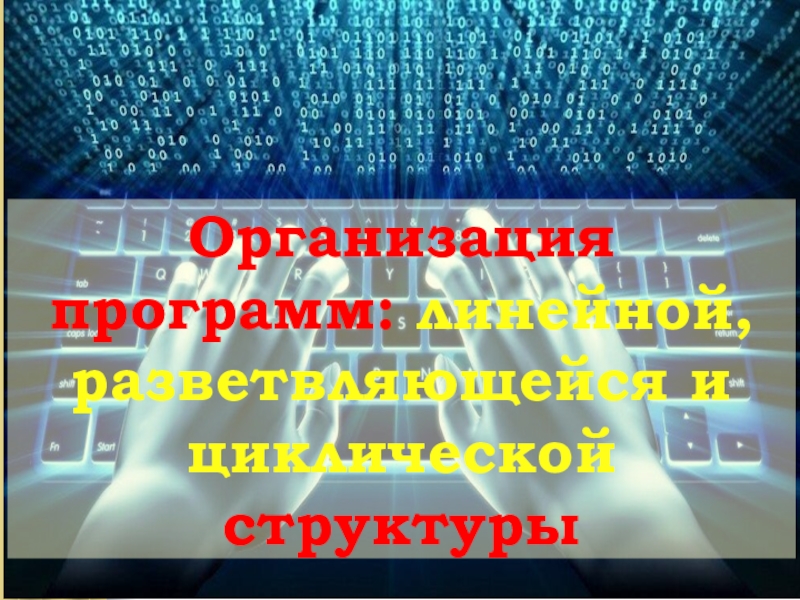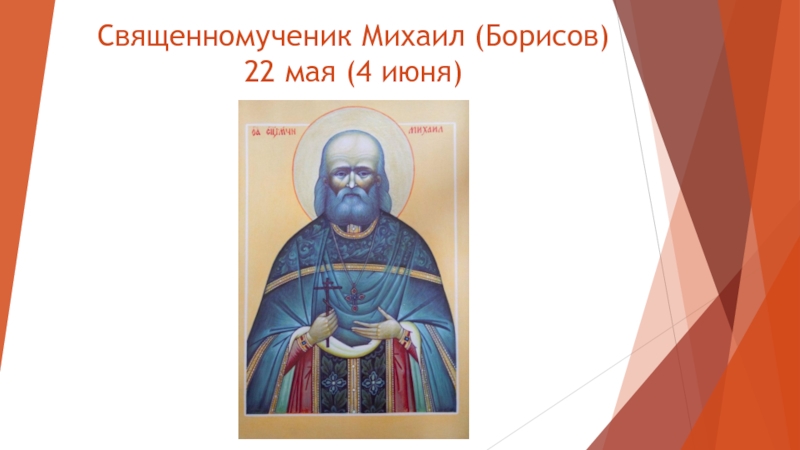Разделы презентаций
- Разное
- Английский язык
- Астрономия
- Алгебра
- Биология
- География
- Геометрия
- Детские презентации
- Информатика
- История
- Литература
- Математика
- Медицина
- Менеджмент
- Музыка
- МХК
- Немецкий язык
- ОБЖ
- Обществознание
- Окружающий мир
- Педагогика
- Русский язык
- Технология
- Физика
- Философия
- Химия
- Шаблоны, картинки для презентаций
- Экология
- Экономика
- Юриспруденция
Using novels in the classroom
Содержание
- 1. Using novels in the classroom
- 2. Studying literature from the literary
- 3. Why literature? In terms of the language,
- 4. Checking textual comprehension - using the question-and-answer
- 5. Checking textual comprehension mixing up two different
- 6. Organising the work of groupsIn every group
- 7. Collecting, classifying and evaluating textual evidence
- 8. Using visual media using photos and slides
- 9. Options for novel discussionsModern literature raises more
- 10. In the initial stage, the teacher practises
- 11. It may be discussed whether the plot
- 12. Creative tasks to use imaginative tasks in
- 13. Follow up activitiesConcerning Brave New World the
- 14. Follow up activitiesThere are activities which refer
- 15. ROBERT HEINLEIN. STARSHIP TROOPERS
- 16. Reflection How do you picture Mr Dubois?
- 17. Follow up Draw a table with two
- 18. 1) Take part in the Internet forum
- 19. Word portraitsFrom a novel, short story, or
- 20. In classGive each student a copy of
- 21. A specimen list shydirtyclumsypedanticsarcastictalkativemodestsoft-spokensmartly-dressedproudpunctualself-centredimpatientstrictA set of
- 22. Скачать презентанцию
Слайды и текст этой презентации
Слайд 3Why literature?
In terms of the language, literary texts offer
genuine samples of a very wide range of styles, registers,
and text types at many levels of difficulty. For this reason alone they are worthy of consideration.Literary texts are open to multiple interpretation. This ready-made opinion gap between one individual’s interpretation and another’s can be bridged by genuine interaction.
Literary texts are not trivial in the sense that they deal with matters which concerned the writer enough to make him write about them. This genuine feel of literary texts is a powerful motivator. Literary texts so often touch on themes to which learners can bring a personal response from their own experience.
Слайд 4Checking textual comprehension
- using the question-and-answer technique (closed questions);
true-false-statements; - fill-in-exercise (e.g. a gapped summary of an episode which
does not refer to lexical or grammatical problems but where relevant items of information have to be filled in); - multiple-choice-tests; - summaries; - putting some sentence(s) in the wrong place; the students find and correct them; - scrambled sentences: put in five sentences which are irrelevant; - scrambled sentences: have them put in the correct order by practising listening comprehension only;Слайд 5Checking textual comprehension
mixing up two different summaries: have the
students correct them;
using lie-detecting exercises;
- locating and contextualising quotations;
-
completing defective dialogues;
- matching quotations and literary figures;matching parts of sentences/main and subordinate clauses; matching paragraphs and headings;
adding redundant sentences; have the students cross them out;
having the students write one sentence for each paragraph;
having the students make suggestions how to illustrate some paragraphs.
Слайд 6Organising the work of groups
In every group there should be:
-
a chairperson who is responsible for the work of the
group; - a secretary who makes notes to be used by the speaker; - a dictionary keeper who looks up all the missing words; - a monitor who is to make sure that every group member makes use of the target language; - a spokesperson who explains the results achieved by the work of the group.Слайд 7Collecting, classifying and evaluating
textual evidence
using word portraits,
where the learners are confronted with a list of adjectives
from which they are expected to choose a limited number and which should be arranged as to their increasing importance (this technique has become known as ranking).offering the students a collage of value judgements or material where different standpoints are expressed, and then the students are asked to say which statements they share/which value judgements they reject and for what reasons.
quotations, proverbs, aphorisms, clichés ... could be used as additional material in order to practise comparative analysis, sometimes even in the pre-reading phase.
Слайд 8Using visual media
using photos and slides to illustrate aspects
of the novel
the teacher may make use of visual
techniques in order to explain certain characteristics of the text. using chronology of events
using audioplay, audiobooks and screen versions of novels
using video (audio) interviews with novelists, film directors, script writers, actors, readers etc.
Слайд 9Options for novel discussions
Modern literature raises more questions than it
answers
a formal debate – forming groups who prepare themselves for
maintaining different standpoints (collecting pros and cons), the members of the same team are seated together and at the same time have to face the opposite party. a hot chair principle, where one student has to undergo something like a cross examination on a subject he has sufficiently prepared.
a panel discussion, which means that four to six people at most are on the panel and have to answer the questions the other class members may fire at them
Слайд 10In the initial stage, the teacher practises active withdrawal rather
than more or less regular intervention (in order to correct
mistakes and to contradict the pupils) so that he plays the part of the chairman rather than that of a (dominant) contributor to the discussion: this may encourage the learners to express their own reactions, feelings, attitudes, interests and standpoints.The discussions have to be carefully prepared in class: this could take place by reading texts and taking notes in individual work, to be followed by pair work and a first trial run, again to be followed by a discussion with a different partner before finally a 'public' classroom discussion takes place
Слайд 11It may be discussed whether the plot of a novel
is psychologically convincing or whether its theme is socially relevant,
or the learners may choose from a collage of value judgements on its literary quality and give reasons for their opinion.Thus it may be discussed in class whether the novel they have read is still topical, whether the pupils think it is a successful/well-written novel, what they think of the literary point-of-view (the events being told from a different perspective), what they think of the comparative quality of the film and the book, etc.
Слайд 12Creative tasks
to use imaginative tasks in class which have
been called "creative development activities"
to use creative writing tasks
whenever there occur gaps in the text e.g. to imagine what main protagonist’s feelings, expectations, hopes, dreams ... may be like in this particular situation. The learners, then, could be asked to write a diary entry by this person on a particular day
to write down what the dialogue between the two main protagonists may have looked like
e.g. When dealing with Ray Bradbury's Fahrenheit 451 the pupils may imagine that the protagonist Montag and his ally Faber want to write a political pamphlet in order to overthrow the government and to reform society.
Слайд 13Follow up activities
Concerning Brave New World the pupils may be
asked to develop a picture of this utopian state in
the year 832 A. F., i.e. a world which would exist two centuries later than Huxley's. Or concerning any utopian novel the pupils may be asked to produce a booklet which may be used as a guide for tourists who visit this society for the first time (this could include texts, photos, cartoons as well as an attractive lay-out).Concerning John Fowles's The Collector the learners may be asked to imagine that the protagonist is arrested in the end and to report to the public about his trial.
It may be a good idea not to use obligatory creative tasks exclusively, but to offer some alternatives from which the students are allowed to choose – “homework restaurant”
Слайд 14Follow up activities
There are activities which refer to the publication
of a literary work as a social event: the publishing
houses as well as the author naturally want a book to sell. If it is to be a successful bestseller, advertising is important, the mass media are influential, therefore a different set of creative tasks will be under consideration now, which refers to the co-text of a literary work.When a book is published, it is normally reviewed; there may be public lectures by the author; there may be interviews with him; letters to the author (if still alive) or to the editor may be written (and some classes may manage to do so by e-mail); controversial discussions may take place in public; the pupils may want to recommend the reading of a book recently published to friends - or warn them against it; newspaper reports about public debates may come out; they will also become the subject of talk shows on TV, a film version may be prepared for which a script will be needed.
Слайд 16Reflection
How do you picture Mr Dubois? Describe his appearance
(as you see it), the manner of his talk, his
walk, gestures etc.Is the philosophy of Mr Dubois appealing to you in any way? Why or why not? What are the strongest and most convincing arguments and what are the weakest point in his logic?
Comment on the words of Mr Dubois “A human being has no natural rights of any nature”.
How would you comment on the lines of one critical review “a teaching system so unreformed that tyrants like Mr. Dubois still flourish”, “the second-rate novel about which there has been all the third-rate talk”, “The scene where officers almost weep over a flogging they ordered does not ring true. These people aren't tough, they only smell strong”?
Does the ideas that Mr. Dubois express mean that such nurtured values of the present as freedom are questionable?
In his novel Heinlein describes the society in the distant future. In your opinion, how realistic is his prediction? Give reasons.
Слайд 17Follow up
Draw a table with two columns with the
headings – plausible and implausible. In the implausible column put
the facts and ideas which in your opinion are unlikely to happen in the future, and in the plausible column put the facts and ideas that you think could happen in the futureA similar task: draw a table with society advantages and disadvantages columns
Compare the novel with the film. What are the advantages of the film over the novel? What are its deficiencies?
Слайд 181) Take part in the Internet forum where sci-fi fans
share their opinions on different novels and films.
2) Publish
your opinion about the novel (film) “Starship Troopers” in the forum.3) Imagine you work in a bookselling business. You have to advertise the novel by making a brief account on its plot.
After being accused of being Fascist, or Nazi I would say, a correction has taken place I think, to a certain degree. And fortunately so, because it was very disappointing when the film came out that I was attacked. Less in England, I must say, but in Europe very much so, and also in the United States based on an article in the Washington Post, where in an editorial the film was discussed as being done by a Nazi.
Paul Verhoeven, the director of Starship Troopers
Comment on this quotation
Слайд 19Word portraits
From a novel, short story, or autobiography, select a
striking character sketch.
Make enough copies for the whole class.
Prepare for
each character a short list of prompts. These should be words or expressions which might or might not apply to the character described. In making the lists, try not to use words which actually appear in the text. Слайд 20In class
Give each student a copy of one of the
texts you have chosen, and allow four to five minutes
for silent reading.While the students are reading, write up the prompt words on the board (OHP)
Ask the students to form groups of three, and to decide which of the prompt words are most and which are least appropriate to the character. For each prompt word they should find words or lines in the text to support their decision.
Class discussion. Run through the list of prompt words, and ask the class to give their views.
